Image-Making Integrated Curriculum Poetry
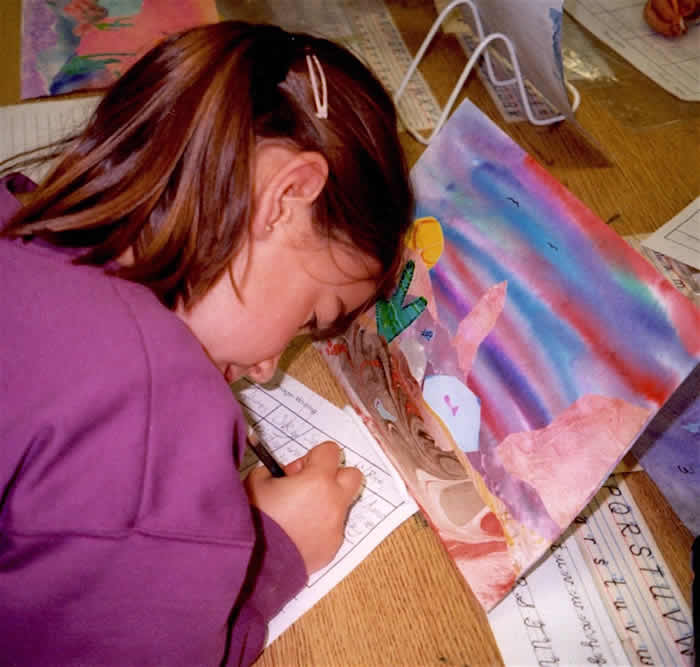
The Image-Making Poetry Process offers another great way to dip your toes in the Image-Making process without taking on a full story sequence. Image-Making can be easily integrated into many different areas of the science and social studies curriculum while exploring many different poetic forms, from simple to more complex. Before a teacher begins designing his or her own curriculum unit, it is recommended that one participate in a hands-on Image-Making Poetry Workshop. Below are a few examples of successful Image-Making integrated curriculum poetry projects.
Image-Making Poetry Instructional Materials
Teachers Manual
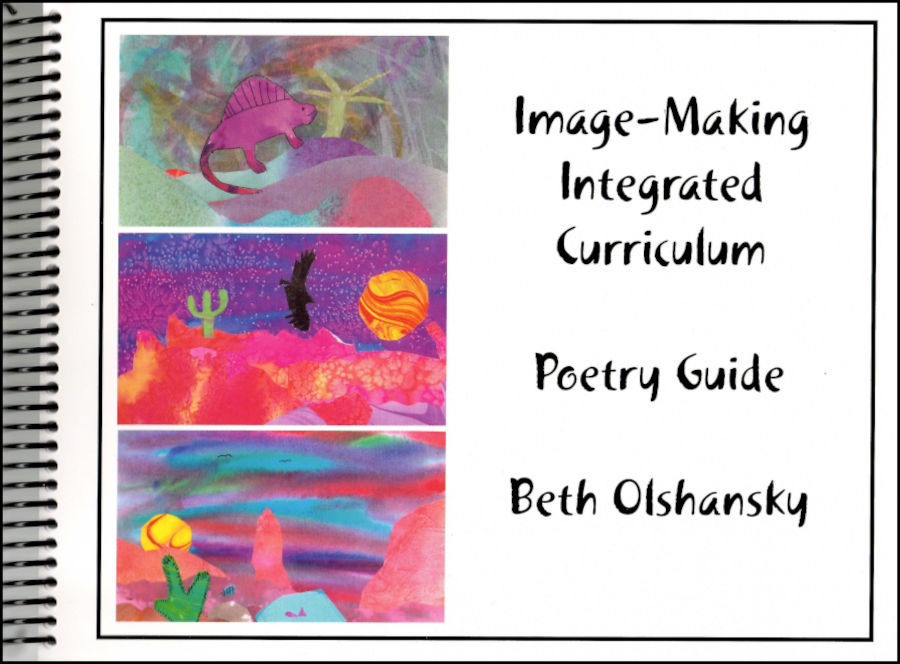
The Image-Making Integrated Curriculum Poetry Manual provides teachers with step-by-step instructions for creating a portfolio of hand-painted textured papers and simple collage images. A variety of poetry masters, appropriate for students of all ages, make the Image-Making process easy to integrate into many areas of the curriculum. This manual is distributed as part of a hands-on workshop.
Mentor Texts
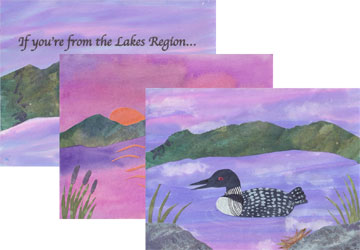
If You’re From the Lakes Region… by Beth Olshansky offers an example of a social studies, science, and language arts integration appropriate for fourth grades across the country. Incorporated into a study of the regions of any state, this Image-Making trifold includes fact-based collage images of a region as well as an animal found in that region. The written text includes a stanza poem, rich with sensory description, designed to enable the reader to experience that region, and informational text about the animal. Two versions are available: Version 1 (v1) includes bulleted facts and version 2 (v2) includes straight informational text in paragraph form. The About the Artist/Writer page on the back panel offers an example of a reflective piece of writing.
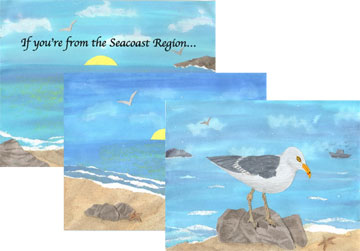
If You’re From the Seacoast Region… by Beth Olshansky offers an example of a social studies, science, and language arts integration appropriate for fourth grades across the country. Incorporated into a study of the regions of any state, this Image-Making trifold includes fact-based collage images of a region as well as an animal found in that region. The written text includes a stanza poem, rich with sensory description, designed to enable the reader to experience that region, and informational text about the animal. Two versions are available: Version 1 (v1) includes bulleted facts and version 2 (v2) includes straight informational text in paragraph form. The About the Artist/Writer page on the back panel offers an example of a reflective piece of writing.
Image-Making Station Labels
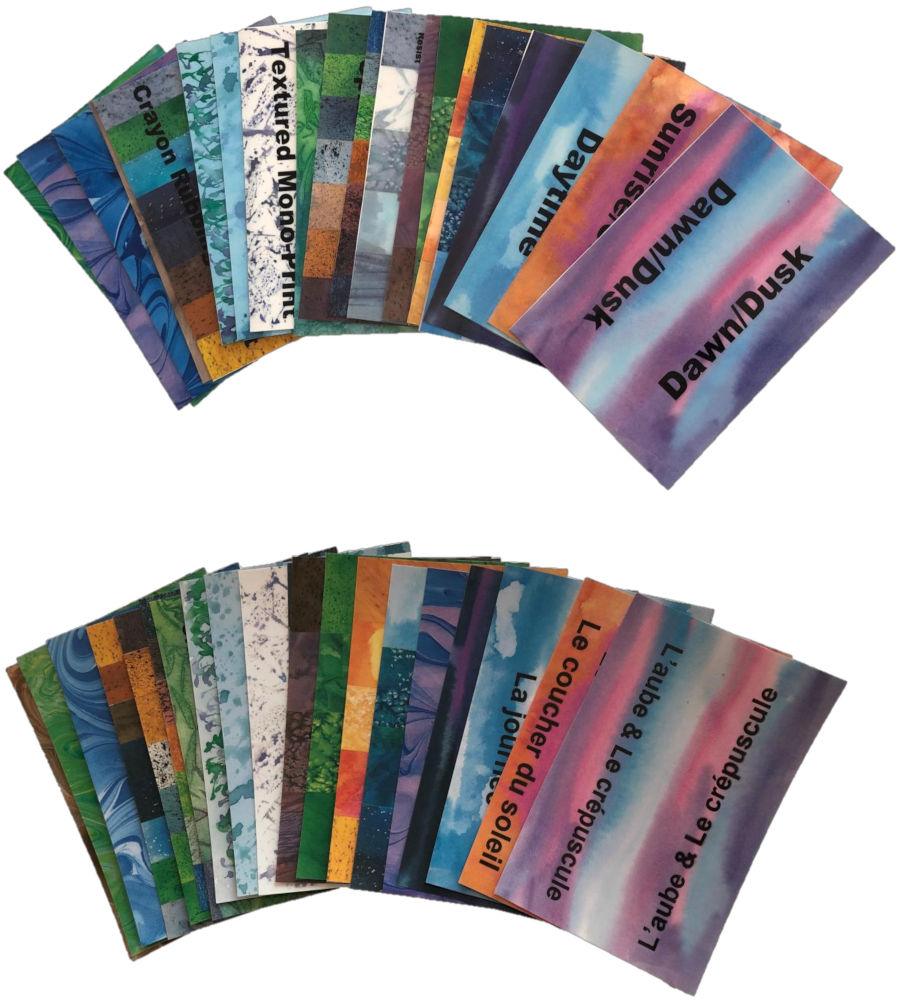
Image-Making Station Labels –This set of 20 laminated station labels are folded to create “tabletop tents.” Each provides a visual example of a paper-texturing technique on the front and directions on the back of how to set up each station and model that painting process. Available in English or French.
Image-Making Integrated Curriculum Poetry Examples
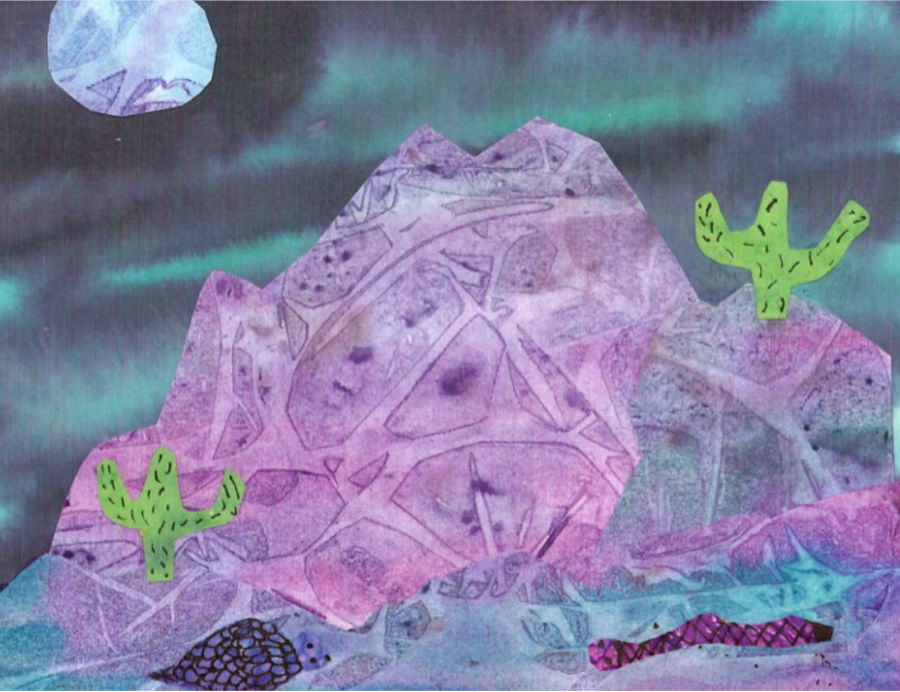
Desert Landscapes
Students in a second-grade classroom each created a collage image depicting a desert landscape and crafted a poem using personification to capture life in the desert. The pieces were published as a class book.
Night creeps in quietly. Moon watches.
Mother Butte whispers to Baby Butte.
The buttes change color in the night sky.
The animals wonder why.
The cacti are supposed to guard the desert but they fall asleep.
Night has never been as quiet as this.
– Caitlin, gr. 2
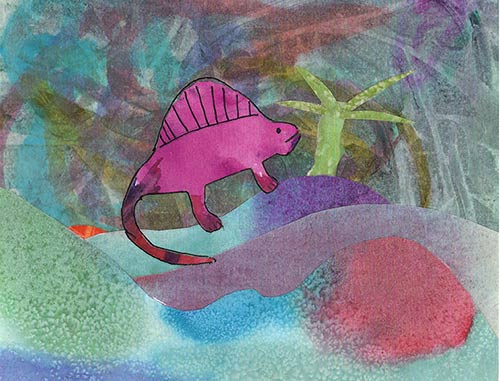
Dinosaurs Through the Ages
First-graders studied dinosaurs and their habitats. Each student created 3 collage images and 3 poems, each page depicting facts about a dinosaur from each of the 3 periods in dinosaur history.
I stomp along my path through the hill-like desert looking for food.
I use my dagger-like teeth to tear apart other dinosaurs.
I lumber over the land like a rolling bolder.
I sometimes stomp at dusk.
I am Dimetrodon, a carnivore from the Triassic Period.
– Trevor, gr. 1
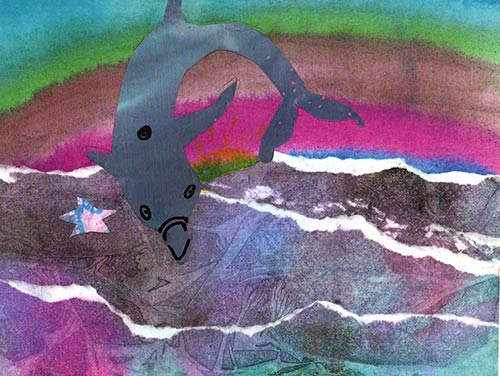
Creatures That Live in the Ocean
Second-graders each chose an ocean animal to study and then created a collage and a fact-based I poem.
I dive in the warm tropical seas and gracefully swim.
I scoop up yummy fish while I swim in the tropical water.
I jump, swim, and twirl in oceans all over the world.
I play fascinating tricks just like humans.
I am a bottlenose dolphin endangered because of pollution.
– Nikki, gr. 2
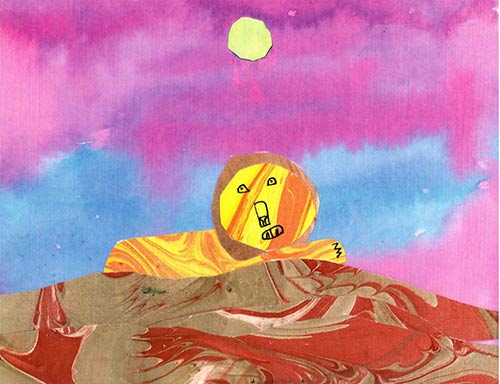
Animals of the Serengeti
In this second-grade classroom, each student selected an animal of the Serengeti to study, created a collage depicting that animal in its habitat and wrote a fact-based I poem. Students’ collage images and poems were made into a class book.
I prowl in the desert moonlight.
I lurk for prey for dinner.
My teeth are so sharp.
I destroy other animals with my razor sharp fangs.
The moon reflects on my golden mane.
I rest at night.
I am a lion, King of the Serengeti.
– Joe, gr. 2
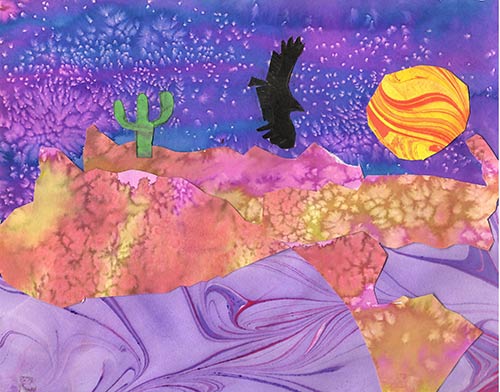
Birds of Prey
Second-graders studied birds of prey. Each student created a collage image and wrote a poem to that image. These poems could be accompanied by informational text pieces about each bird of prey.
Stars sparkle like fireworks falling down to the river.
The river ripples under the sun.
The plateau holds the cactus silently.
The falcon soars to the sun.
– Tommy, gr. 2
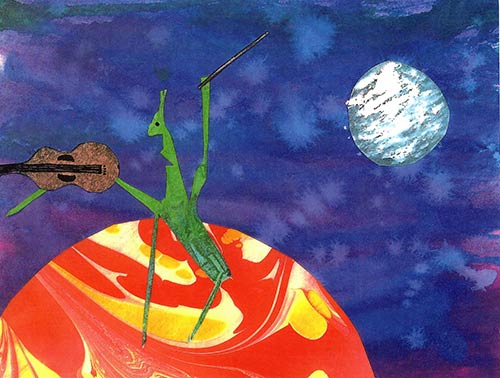
Found Images
Fifth-graders were invited to discover hidden images in their portfolios of hand-painted papers, craft a collage, and free-write a poem. These pieces were made into a class book.
The praying mantis
plays beautiful songs
In the brisk wind
as his green shell
brightly glows
over a juicy peach.
The sky peeks around
the crackling planets
waiting for dawn.
– Michael, gr. 5